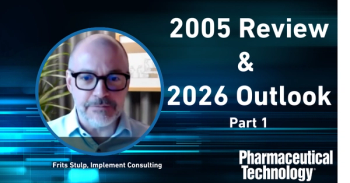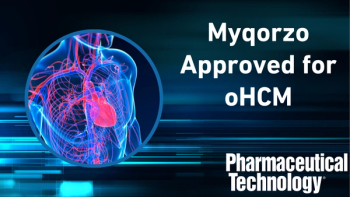
Behind the Headlines: Mpox Resurges; Eli Lilly Adds CGT Facilities; FDA Updates
This Behind the Headlines news roundup panel discussion covers news items such as the resurgence of mpox in Africa, “medical tourism” in India, Eli Lilly’s new Boston CGT facilities, and contract development and manufacturing organization (CDMO) projected growth rates for the 2023–2029 period, and the reasons behind them.
This Behind the Headlines news roundup panel discussion covers news items such as the resurgence of mpox in Africa, “medical tourism” in India, Eli Lilly’s new Boston CGT facilities, and contract development and manufacturing organization (CDMO) projected growth rates for the 2023–2029 period, and the reasons behind them.
The panel also discussed at more length the surge, or more appropriately the revitalization of interest, in the antibody-drug conjugate (ADC) space. In August 2024, Merck said it will pay an initial $700 million to acquire full global rights to clinical-stage bispecific antibody CN201 from privately held biotechnology company Curon Biopharmaceutical. Why was there so much excitement about ADCs at the recent BIO Conference in San Diego
The panel also talked about FDA leadership, especially in regard to training how to solve common problems but also in how best to train staff generally. A Federal Register notice dated Aug. 8, 2024 announced FDA’s Fiscal Year 2025 for the Center for Drug Evaluation and Research (CDER) Office of Pharmaceutical Quality (OPQ) Experiential Learning Site Visit Program (ELSVP) (1). As per their press release, the ELSVP, “allows staff to observe commercial manufacturing and testing operations as well as pilot plants, with the goal of better understanding standard operations of the pharmaceutical industry and how those impact the developmental programs and commercial life cycles of drugs. It does not replace or supplement a regulatory inspection” (1).
Also, due to the rapid expansion of cell and gene therapies (CGT), FDA has launched the Cellular and Gene Therapies Interactive Site Tours Program. “This initiative allows FDA staff to visit industry sites, facilitating an exchange of regulatory and industry best practices. By gaining first-hand insight into the manufacturing process, the FDA aims to enhance its review capabilities and foster a deeper understanding of biotech operations. This collaboration between industry and the regulatory body is a crucial step towards streamlining the development of ATMPs [advanced therapy medicinal products], ultimately benefiting patients and advancing the field of biotechnology” (2).
As a final wrap-up, the panel looked at the idea that the dark days of 2023 investment are now squarely behind us, and that the dawn of stronger investment sentiment is coinciding with a broader adoption cycle of artificial intelligence and machine learning equipment and innovation. This presages well for a boom two-year cycle, which is about to provide unusually high levels of industry growth opportunities for nearly all stakeholders—ultimately passing on rewards to most patient populations, and especially those in the rare disease category.
References
- Lavery, P. Drug Companies Encouraged by FDA to Participate in FY 2025 Site Visitation Program. PharmTech.com. Aug. 9, 2024.
https://www.pharmtech.com/view/drug-companies-encouraged-fda-participate-fy-2025-site-visitation-program - Manalac, T. FDA Eyes Site Tours of Cell and Gene Therapy Manufacturers. BioSpace.com. July 16, 2024.
Panelists
Dr. Laks Pernenkil Principal, US Life Sciences Product, Supply and Manufacturing Operations Practice Leader, Deloitte Consulting
Beth Willers, Principal and Owner, White Matter Communications
Benjamin McLeod, Director, Cell & Gene Therapy Segment, NanoMosaic Inc.
Moderator
Chris Spivey, Director of Industry Relations and Strategic Partnership, MJH Life Sciences
Newsletter
Get the essential updates shaping the future of pharma manufacturing and compliance—subscribe today to Pharmaceutical Technology and never miss a breakthrough.




